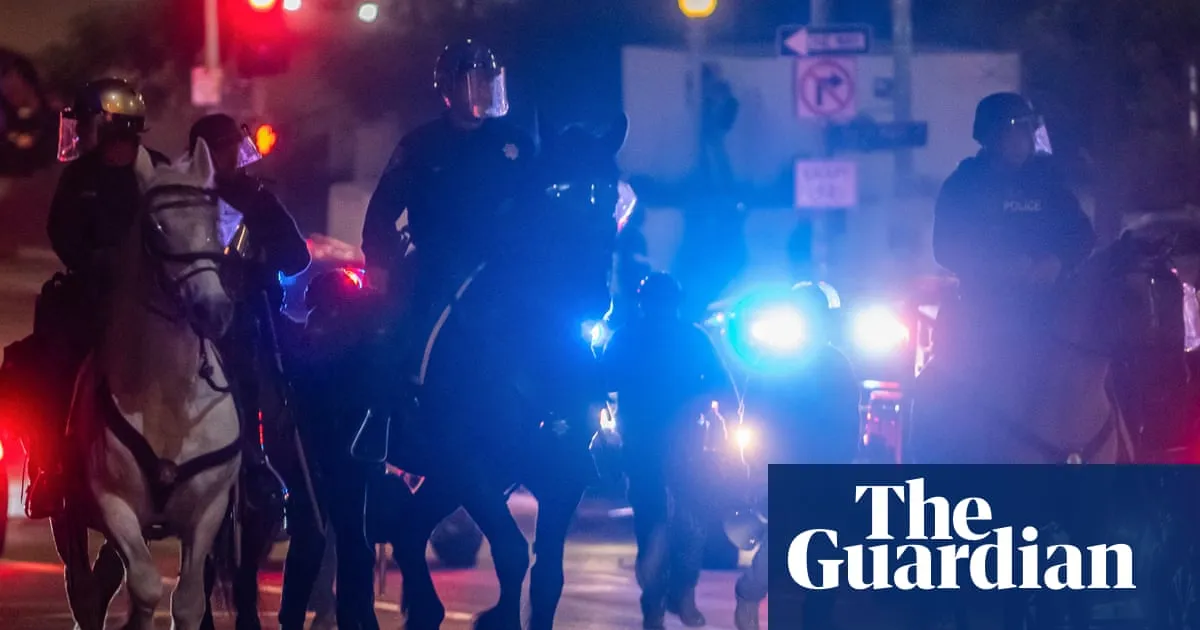
Los Angeles police have announced a series of mass arrests in the city’s downtown area as demonstrators gathered in defiance of an overnight curfew. This curfew was imposed following several days of protests against Donald Trump’s immigration policies and the military's deployment in response to escalating tensions. Late on Tuesday night, the LAPD updated their followers on X, stating that “multiple groups” continued to congregate within the designated curfew area. They confirmed, “Those groups are being addressed and mass arrests are being initiated.”
Mayor Karen Bass declared a 10-hour curfew for a one-square-mile area of downtown Los Angeles, aimed at curbing the ongoing demonstrations against Immigration and Customs Enforcement (ICE). The curfew was set to run from 8 PM to 6 AM. The LAPD reported having conducted over 300 arrests of protesters within the last two days, underscoring the severity of the situation. This crackdown on protests came shortly after California Governor Gavin Newsom filed an emergency request to block the Trump administration from deploying military forces alongside ICE officers during raids throughout Los Angeles.
In a controversial move, Trump ordered the deployment of 4,000 National Guard members and 700 Marines to Los Angeles following days of protests driven by anger over aggressive ICE raids targeting immigrant communities, day laborers, and garment workers. It's important to note that Marines and the National Guard have no powers of arrest and are primarily present to protect federal buildings. Newsom and California Attorney General Rob Bonta filed a lawsuit on Monday, claiming Trump's takeover of the state National Guard was unlawful and against the governor’s wishes.
A federal judge declined to immediately rule on California’s request for a restraining order, scheduling a hearing for Thursday. In a powerful speech, Newsom condemned Trump for “indiscriminately targeting hard-working immigrant families” and for militarizing the streets of Los Angeles. He highlighted incidents where ICE agents had reportedly detained individuals outside Home Depot, arrested a nine-month-pregnant US citizen, and even sent unmarked vehicles to schools.
In stark contrast to Newsom’s stance, Trump delivered a fiercely partisan military speech earlier on Tuesday, labeling the LA protesters “animals” and vowing to “liberate Los Angeles.” Speaking at an event in Fort Bragg, North Carolina, he made unsubstantiated claims that the demonstrations were orchestrated by paid “rioters” and suggested that pallets of bricks had been strategically placed for protesters to use against police officers.
On Tuesday night, hundreds of troops were transferred to Los Angeles despite objections from Democratic officials and concerns from local law enforcement. US Defense Secretary Pete Hegseth stated that the military would likely remain in the city for 60 days at a projected cost of at least $134 million. Trump indicated that the troops would stay until there was “no danger,” and he hinted at the possibility of invoking the Insurrection Act, stating, “If there’s an insurrection, I would certainly invoke it. We’ll see.”
California's lawsuit emphasized that Trump and Hegseth have attempted to impose a “warrior culture” in communities where Americans live, work, and go to school. The deployment of the National Guard has faced strong opposition from California Democrats, including every Democratic governor in the US. Senator Alex Padilla characterized the protests and ensuing legal conflicts as a crisis stemming from Trump’s actions, asserting that the National Guard's presence would only escalate tensions.
As the situation in Los Angeles continues to evolve, the local police department remains confident in their ability to manage the unrest. Jim McDonnell, the LA police chief, highlighted the department’s extensive experience in handling large-scale demonstrations. However, the unexpected arrival of federal military forces poses significant logistical challenges, complicating efforts to maintain peace in a city already on edge.
The unfolding events in Los Angeles reflect a broader national discourse surrounding immigration policy, law enforcement practices, and civil rights, prompting residents and officials alike to grapple with the implications of these developments.